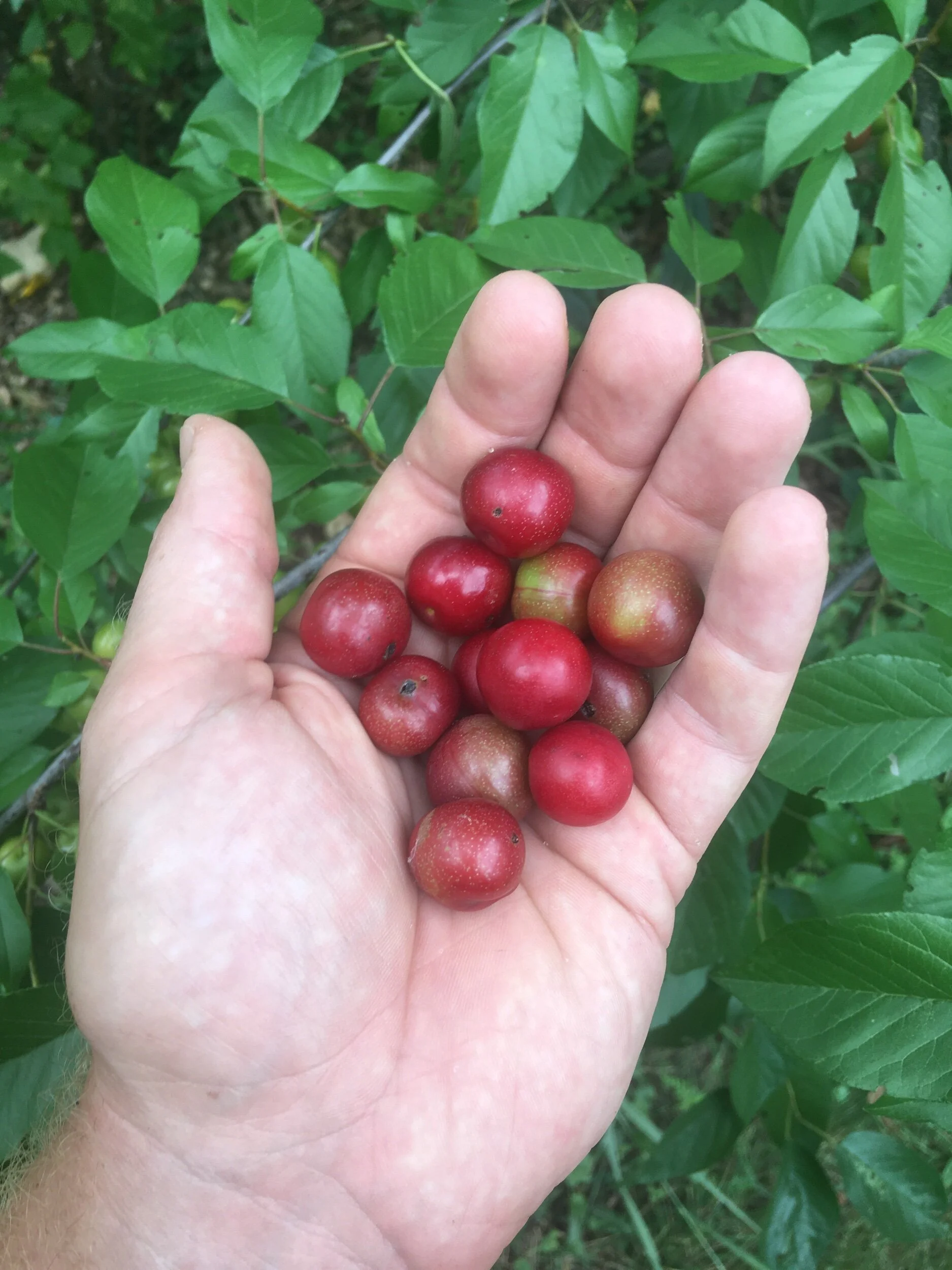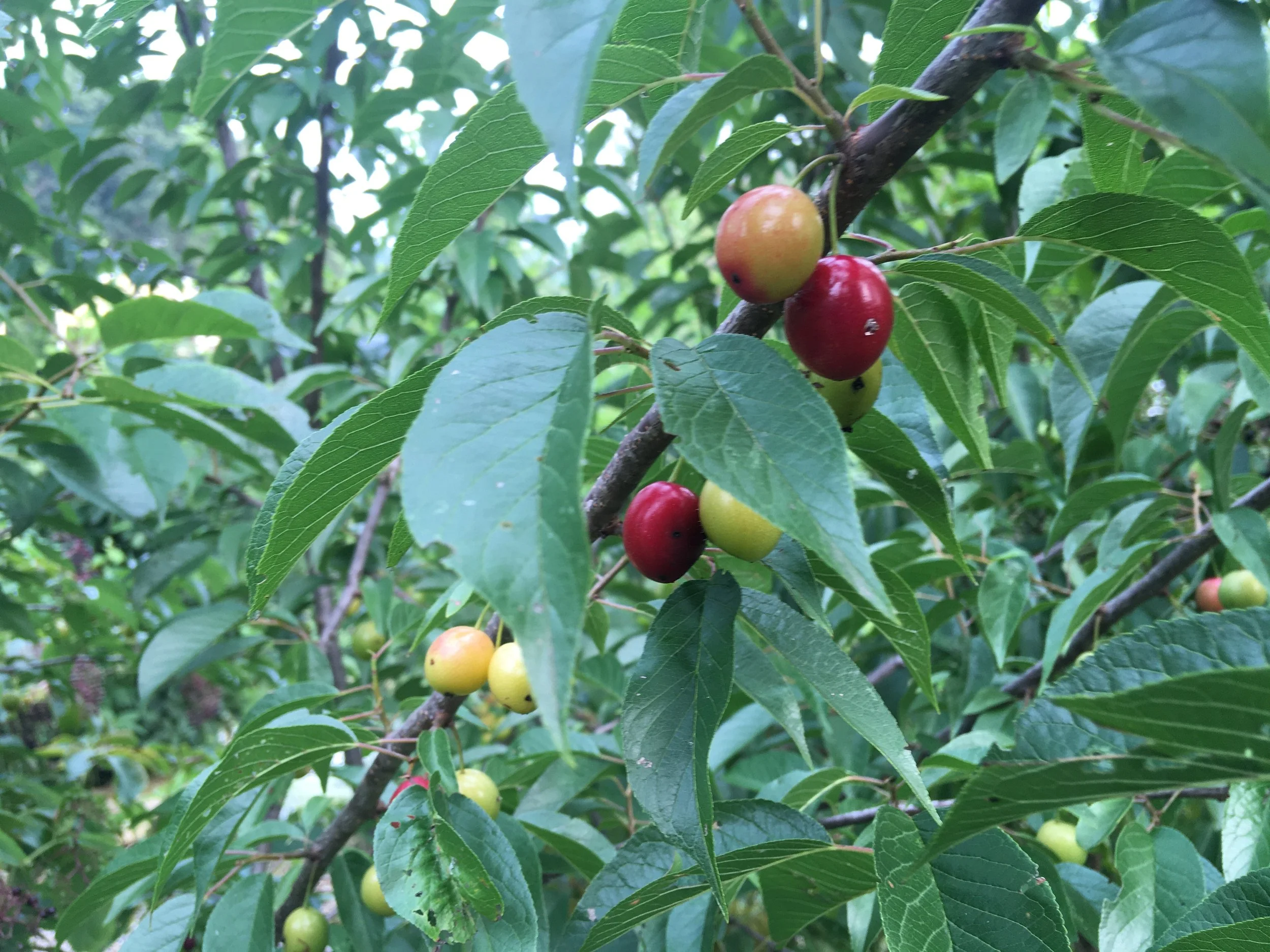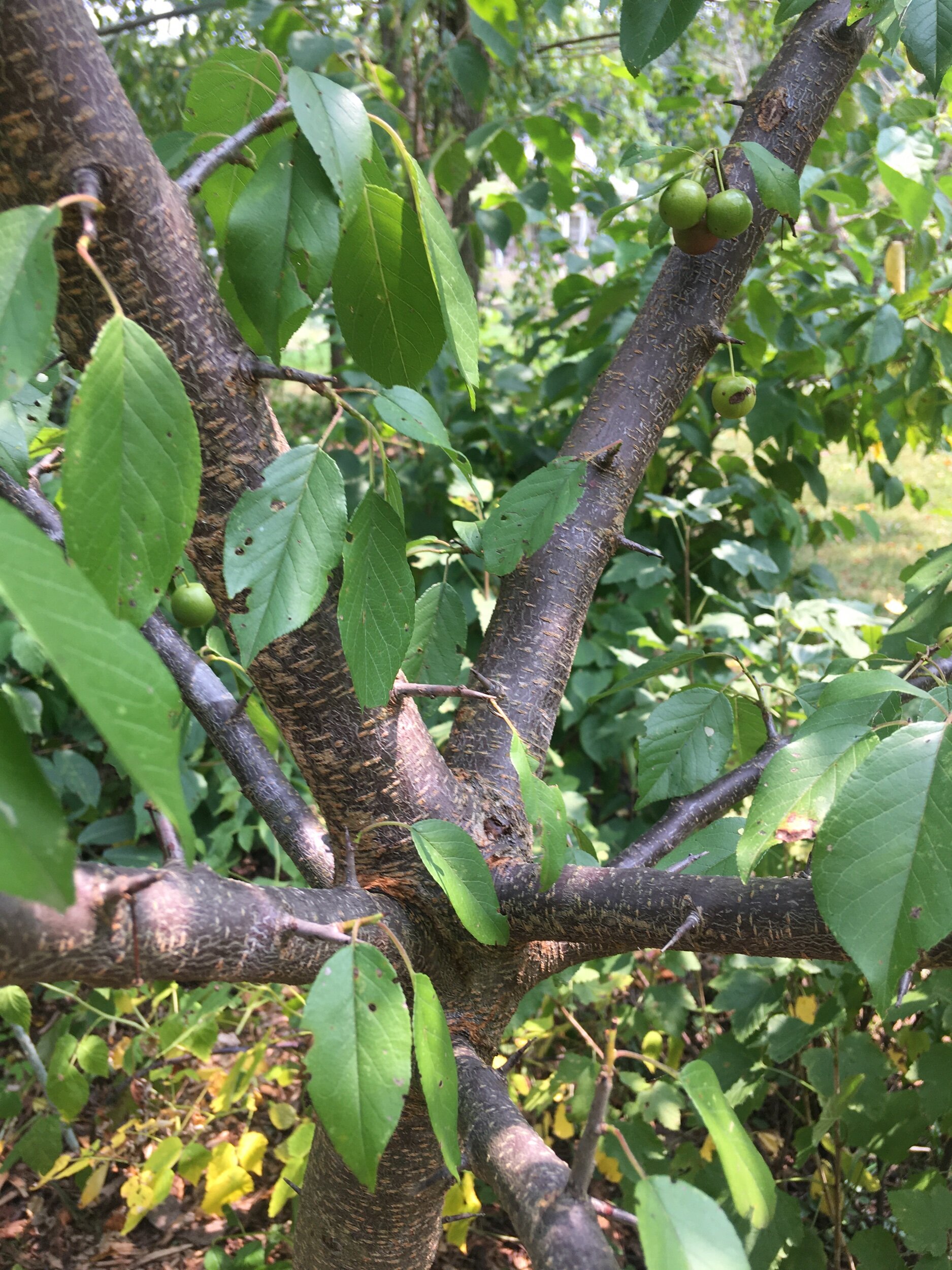Plum








Plum
Prunus hortulana
Plant for soil-serving shelterbelt thickets, for the abundance of craft uses, and for the intoxicating flower and desirable fruit!
Hardy from Zones to 5 to 9. 10-20 feet tall and wide. Self-pollinating, but better crop with another individual nearby.
A Rose by any other name is a Plum! Well, that’s at least one other name. Plums are in the broad Rose family like their close cousins Peach and Cherry, all sharing the same genus name Prunus. Native Plum goes by lots of other names too: Sandhill, Osage, Thorn, Red or Yellow, Goose and Hog, Sloe and River, and often collectively known as Plum Cherries.
The versatile names speak to Plum’s versatile habitats, ranging all over North America’s edges between grass and woods and between land and river. Sometimes this successional habitat was encouraged by fires ignited by Indigenous tribes, who have had many uses for Plum. Fruits for fresh eating or pitting and drying, boiled scraped bark as medicinal application to wounds and bundling small twigs into brooms, mixing crushed fruits with salt for mouth disease and mixing roots with other plants as diarrhea remedy, and sprouts used in ceremony and prayer to heal the sick.
Plum isn’t just native here. They also hail from the Caucasus of Eastern Europe, Iran and parts of the Middle East, to regions of Asia. The native Plum Cherries are often crossed with Japanese varieties, which are pickled and sometimes dried to make umeboshi. All around the world people have found ways to turn this intoxicating fruit into intoxicating alcohol. In the Cotswald area of England, plums are fermented into a cider-like drink called jerkum, the Balkans are known for plum brandy called slivovitz, Hungary has its paste jam and palinka (another brandy cultivar), and Romania ferments 80% of its abundant plum crop into an extremely strong pre-meal brandy known as țuică. Sounds like people know how to use Plum!
Plum is most likely one of the first fruits domesticated by humans, found in Neolithic sites with olives, grapes, and figs. They’re also one of the first flowers we enjoy every Spring! Small five-petaled wonderfully scented white flowers blossom before leaves bud out in April. Twisting reddish-brown branches arch down, heavy with the harvest. Young bark looks bright with long white lenticels. The small fruits, mostly up to an inch in diameter, come in a fabulous array of colors: yellow to gold, pink to red and dark purple. The fruits are drupes, firm juicy flesh around a single seed that can be pressed for oil. Some drupes taste tart, some sweet, all delicious and nutritious. Plums have high levels of antioxidants and are a good source of vitamin A, copper, potassium, and fiber. Eating the skin helps stimulate bowel movement if you need that kind of support (and don’t we all sometimes). We like them fresh, jammed, baked, cooked into syrup, or rolled into fruit strips. Leaves and fruit give a green dye to cloth.
Other animals also love Plum, such as Turkey, Black Bear, Foxes, many birds, and Deer, making this tree an excellent selection for hunters looking to restore habitat. Plum’s roots spread wide and shallow and sucker to form dense thorny thickets. The broad crowns and rugged shapes offer shelter for lots of critters, provide an excellent drought-resistant shelterbelt, and that suckering habit helps hold soil against the gravity of erosion. Suckers could be coppiced for firewood or making instruments and tool handles, and they’re also a great way to clone favorite trees or replace ones damaged by black knot, rusts, or curculios (so be sure to clean up fallen fruit for good orchard hygiene!).
Right now, we grow the Hortulan Plum, or Gardener Plum, also known as Wild Hog Plum, a native species from the Midwest to the East Coast, in floodplains and savannas. Named by Liberty Hyde Bailey in the 1890s, this Plum distinguishes itself with glossy leaves and red round fruit speckled with small white dots. Most of the fruit ripens in August on multiple stems bent down with the weight. The taste ranges a fair bit from sweet to tart, but we’ve really enjoyed them as fruit leather and jam!
The name plum comes from Old English from Old German from common Latin from Greek from somewhere in Asia. Sometime around the 19th century people started using the word to refer to “something desirable.” Hard for us to imagine a more fitting name for one of our favorite fruits!
We propagate our Hortulan Plums from seed and suckers.